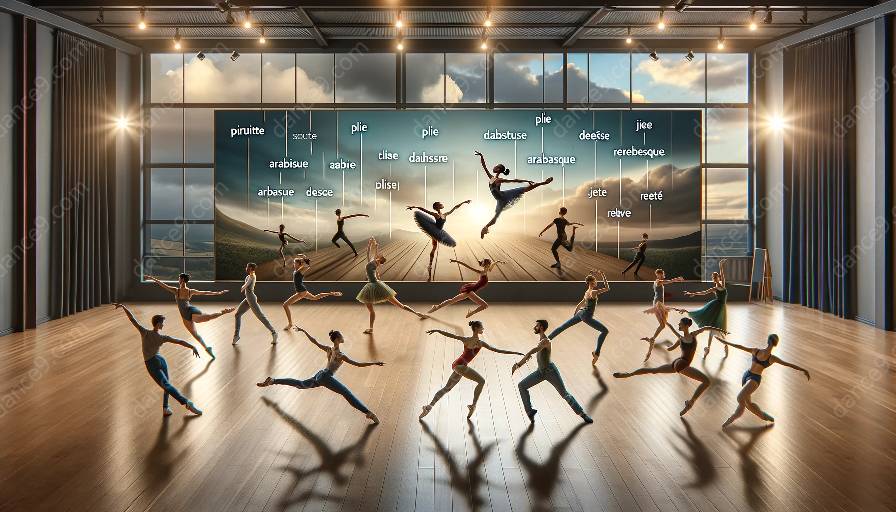The world of dance is a rich tapestry of movements, expressions, and emotions. Within this vibrant art form, symbolism and metaphor infuse dance terms with deeper meanings, offering a profound insight into the human experience. In this exploration, we dive into the captivating realm of dance terminology, uncovering the intricate symbolism and metaphorical expressions that enrich the dance community.
Unveiling the Power of Symbolism in Dance Terms
Symbolism serves as a potent tool for dancers and choreographers to communicate complex emotions and concepts. Through the use of symbolic gestures, movements, and motifs, the language of dance transcends verbal communication, resonating with audiences on a profound level. Let's delve into some examples of symbolism woven into dance terms:
- Ballet Terminology: In ballet, the pointe technique symbolizes grace, strength, and poise. The meticulous placement of the feet on the tips of the toes conveys an ethereal quality, evoking a sense of weightlessness and beauty.
- Modern Dance Terminology: Within modern dance, the fall and recovery movement embodies resilience and renewal. This symbolic motif reflects the human experience of overcoming adversity, regaining balance, and finding strength in vulnerability.
- Cultural Dance Terminology: In traditional cultural dances, the swirling motions signify a connection to nature, invoking images of flowing rivers, gusts of wind, and the cycle of life. These symbolic movements honor the earth and celebrate the interconnectedness of all living beings.
Embracing Metaphor in Dance Terminology
Much like poetry, dance terminology is rife with metaphors that elucidate intricate narratives and emotions. Metaphorical expressions in dance evoke vivid imagery, allowing performers to embody abstract concepts and stories. Let's explore the enchanting realm of metaphor through the lens of dance terms:
- Rhythm and Tempo: The tempo of a dance piece can serve as a metaphor for life’s ebbs and flows. The fluctuation between swift, staccato movements and languid, flowing gestures mirrors the dynamic nature of existence, with its moments of urgency and repose.
- Balance and Equilibrium: The notion of balance in dance terminology goes beyond physical stability; it embodies harmony, both within oneself and in relation to the surrounding world. As dancers strive to achieve equilibrium, they metaphorically seek a state of inner tranquility and unity with their environment.
- Transformation and Evolution: The concept of transformation is intricately woven into dance terms, symbolizing the metamorphosis of emotions, experiences, and identities. Through choreographic metaphors, dancers embody the process of growth, change, and self-discovery, inviting audiences to witness profound journeys.
Conclusion
Symbolism and metaphor converge in dance terminology, enriching the art form with layers of meaning and emotional resonance. By embracing the profound symbolism and metaphorical depth embedded within dance terms, performers and audiences alike embark on a captivating journey of interpretation and discovery. As dancers weave symbolic tapestries and evoke metaphysical landscapes through their movements, the art of dance continues to inspire, enlighten, and connect us through its transcendent language.











































